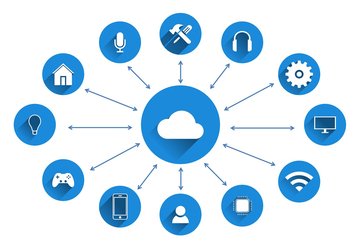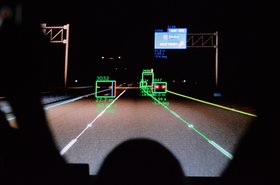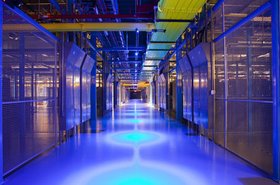Connecting billions of devices to the cloud presents numerous challenges, bandwidth restrictions, data security risks and reduced communication between computing infrastructure. Edge computing has the potential to prevent such issues from arising as the physical infrastructure is located closer to the source data (the end user's device).
Latency times associated with existing infrastructure is approximately 100 milliseconds, for some services such as online HD video streaming, these can require up to three-times less latency to be properly functional.
This issue can be mitigated by locating the physical infrastructure closer to the source data and in turn providing higher bandwidth.
In today’s increasingly ‘on-demand’ culture this is important for maintaining consistent access speeds to streaming services or even for connected gaming consoles since it reduces latency times.
On a much grander scale, Edge computing will become essential for using hyper-critical infrastructure which requires high redundancies; in France for instance, 17 percent of Edge computing is used for highly critical processes.
The edge of glory
The impact of Edge computing on data center construction is set to be significant, disrupting years of reliance on the construction of 60MW hyperscale data centers across the globe.
Data center construction will evolve so that the most data-intensive centers will be located outside of urban areas instead of playing host to micro data centers that are in close proximity to fiber-connectivity and source data.
Owing to the reliance of major clients on cloud-computing and the subsequent need for hyperscale data centers, there is a burgeoning requirement to design and build the infrastructure that will allow Edge computing to assert itself as the future of connectivity and data-handling.
The Grand Paris (Greater Paris) project in the Paris metropolitan area, is a project aimed at building a sustainable city and improving the living environment for residents. It is already setting the standard for Edge computing infrastructure construction and deployment.
As part of the infrastructure project, the largest in Europe, 1152 optical fiber cables are being deployed along 200km of railway track, amounting to 144 cables which will branch out of the line every 800 meters. At each of these points along the track, smaller data centers of less than 1000 sqm representing the Edge computing layer of the network will be constructed. Commissioning of these data centers is set to begin in 2024.
The creation of micro data centers within and around our towns and cities is set to revolutionize mobile connectivity and data access. The transition from 4G to 5G will require a vast infrastructure network of wired, fiber optic connections to provide transmitters and base stations with near-instantaneous access to data.
To enable this to happen, clients will need to expand the size of their fiber optic pipelines to enable suitable connections to micro data centers. This change should be embraced as the opportunities presented by Edge computing and the rollout of 5G are numerous. For example, 5G will allow one million devices - TVs, mobile phones, tablets - within one square kilometer to be connected all at once.
The future of Edge computing looks to be positive, but it can only be successful with the right investment in infrastructure such as micro data centers. The rollout of 5G will almost certainly depend on the successful deployment of critical infrastructure, without which expectations of near-instantaneous access to data will not become reality.
The technology, telecommunications, and professional services industries must work collaboratively to bring leadership on Edge computing and data center design and construction from the edge, to the fore.





